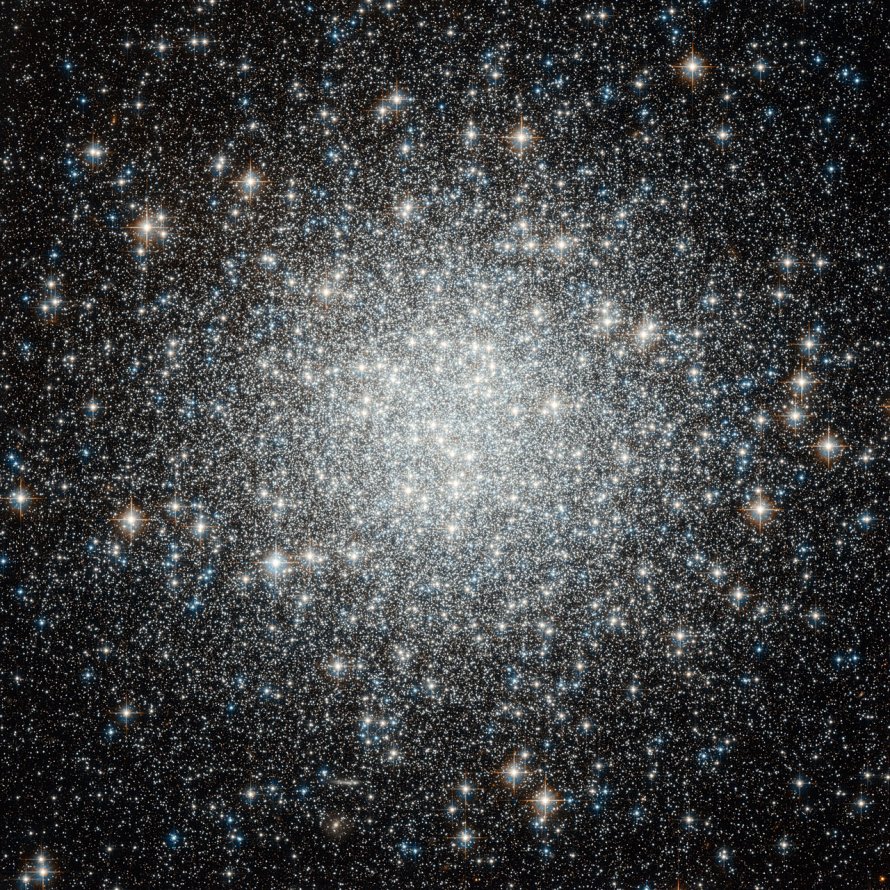M53 (NGC 5024)
Messier 53 (NGC 5024) is a globular cluster located in the constellation Coma Berenices, in the Galactic Center of the Milky Way Galaxy in the Local Group of galaxies. M53 is 58000 light years away from Earth.
M53 is best viewed during late spring, is magnitude 8.3, and can be viewed with binoculars. M53 is 13' in apparent size. For reference, the full moon is 30'.
Observing difficulty: Intermediate
- Name:
- Type:
- globular cluster
- Constellation:
- Coma Berenices
- NGC or IC:
- NGC 5024
- Magnitude:
- 8.3
- Viewing:
- binoculars
- Size:
- 13'
- Distance (light years):
- 58000 LY
- RA:
- 13h 12.9m
- Dec:
- 18 10'
- Season:
- late spring
- Milky Way location:
- Galactic Center
- Galaxy group:
- Local Group
- Messier Marathon #:
- 46
* The naked eye can see up to magnitude ~7-8 objects under ideal dark sky conditions.
An Ancient Celestial Sphere in Coma Berenices
When exploring the deep sky objects enumerated by French astronomer Charles Messier, Messier 53 (M53), a globular cluster nestled within the constellation of Coma Berenices, is an object of particular interest. This article provides a comprehensive understanding of M53, its notable features, magnitude, scientific importance, and guidelines for observing it.
Historical Overview
M53 was discovered by Johann Elert Bode in 1775 and subsequently added to Messier's catalogue. The cluster has continued to spark interest among astronomers for centuries, offering insights into our galaxy's structure and evolution.
Astrophysical Properties
Located approximately 58,000 light-years from the Earth, M53 is one of the more distant globular clusters in the Milky Way. With an estimated age of around 13 billion years, M53 is nearly as old as the universe itself, bearing witness to the earliest stages of galactic formation.
This globular cluster comprises hundreds of thousands of stars densely packed into a spherical shape spanning about 220 light-years in diameter. Many of the stars in M53 are Population II stars, the oldest type of stars in the universe, characterized by their low metal content.
Magnitude and Size
M53 has an apparent magnitude of 7.6, making it slightly challenging to spot with the naked eye, but it's well within the reach of binoculars or small telescopes. It occupies an area of approximately 13 arcminutes on the sky, roughly equivalent to less than half the diameter of the full Moon.
Scientific Significance
Studying globular clusters like M53 provides astronomers with valuable insights into the early universe. As the stars within these clusters are some of the oldest known, they carry information about the early stages of stellar evolution and the chemical composition of the early universe.
Furthermore, M53 is interesting because of its location in the halo of our galaxy and its high velocity relative to the Sun. These features give astronomers clues about the mass distribution and the dynamic structure of the Milky Way.
Locating and Observing M53
M53 resides in the constellation Coma Berenices, close to the North Galactic Pole. It can be found approximately 1 degree northeast from the star Diadem (alpha Comae Berenices).
Despite its distance, M53 is a rewarding target for amateur astronomers. In dark skies, it appears as a faint, fuzzy star to the naked eye. Binoculars or small telescopes reveal a glowing ball of light. With larger telescopes, observers can begin to resolve individual stars at the cluster's edges, making for a captivating sight.



